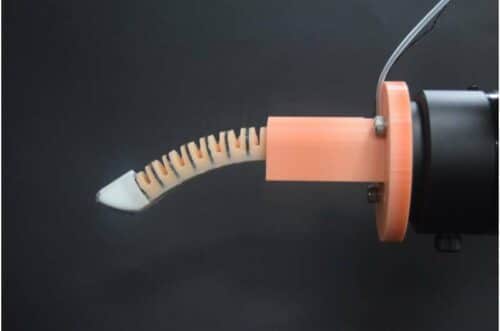Researchers at the University of Science and Technology of China have developed a robotic “finger” with advanced touch sensitivity, capable of conducting medical exams such as taking a pulse and detecting abnormal lumps.

The soft robotic device developed at the University of Science and Technology of China could assist in early disease detection, including breast cancer, and offer patients a more comfortable alternative to traditional physical exams. The technology holds significant potential for healthcare professionals, especially in remote or underserved areas where there is a shortage of medical staff. It could enable precise, non-invasive examinations while reducing discomfort for patients.
“By further development to improve its efficiency, we also believe that a dexterous hand made of such fingers can act as a ‘Robodoctor’ in a future hospital, like a physician,” says Hongbo Wang, Researcher, Sensing Technologies, University of Science and Technology of China and one of the study’s authors.
While rigid robotic fingers have existed for some time, concerns over their suitability for delicate tasks have been raised. Some experts fear that conventional robotic devices might exert too much force, risking harm to patients by damaging lumps or causing discomfort during exams. To address these concerns, soft robotics—lightweight and low-cost—have gained attention for mimicking human hand movements safely. However, such devices have struggled to replicate the sensitivity of real fingers.
“Despite the remarkable progress in the last decade, most soft fingers presented in the literature still have substantial gaps compared to human hands,” the authors noted, underscoring the challenge of creating robotic devices fit for real-world medical use.
The researchers’ breakthrough lies in a design that uses conductive fiber coils and twisted liquid metal fibers at the fingertip. These allow the robotic finger to measure the pressure and angle of movement as it interacts with objects, achieving sensitivity comparable to human touch.
In testing, the robotic finger accurately identified lumps embedded in silicone, monitored a participant’s pulse, and even typed the word “hello.” According to the researchers, these early results suggest the device could be adapted for a wide range of medical uses in the future.
“We hope to develop an intelligent, dexterous hand, together with a sensorized artificial muscle-driven robotic arm, to mimic the unparalleled functions and fine manipulations of the human hands,” said Wang.
Looking ahead, the researchers plan to enhance the robotic finger’s flexibility to perform even more complex medical tasks, aiming to replicate the fine manipulations of human hands.













